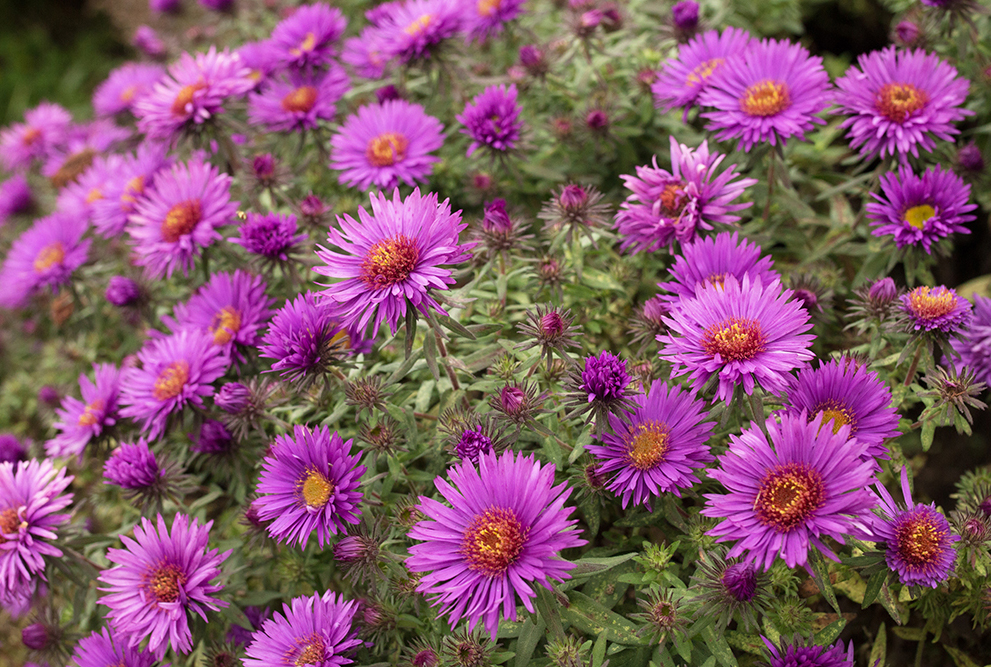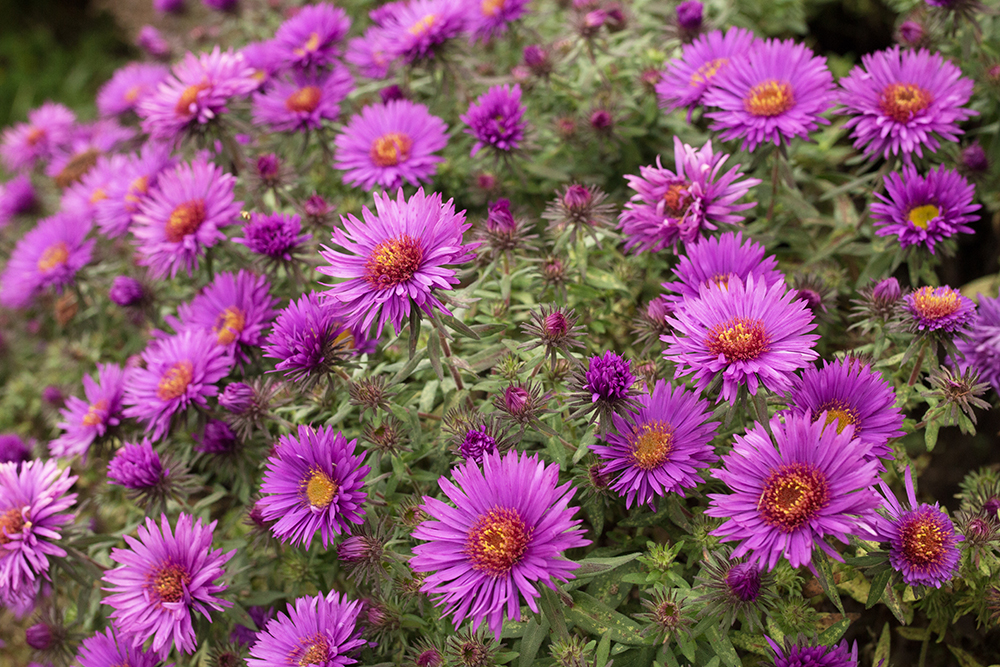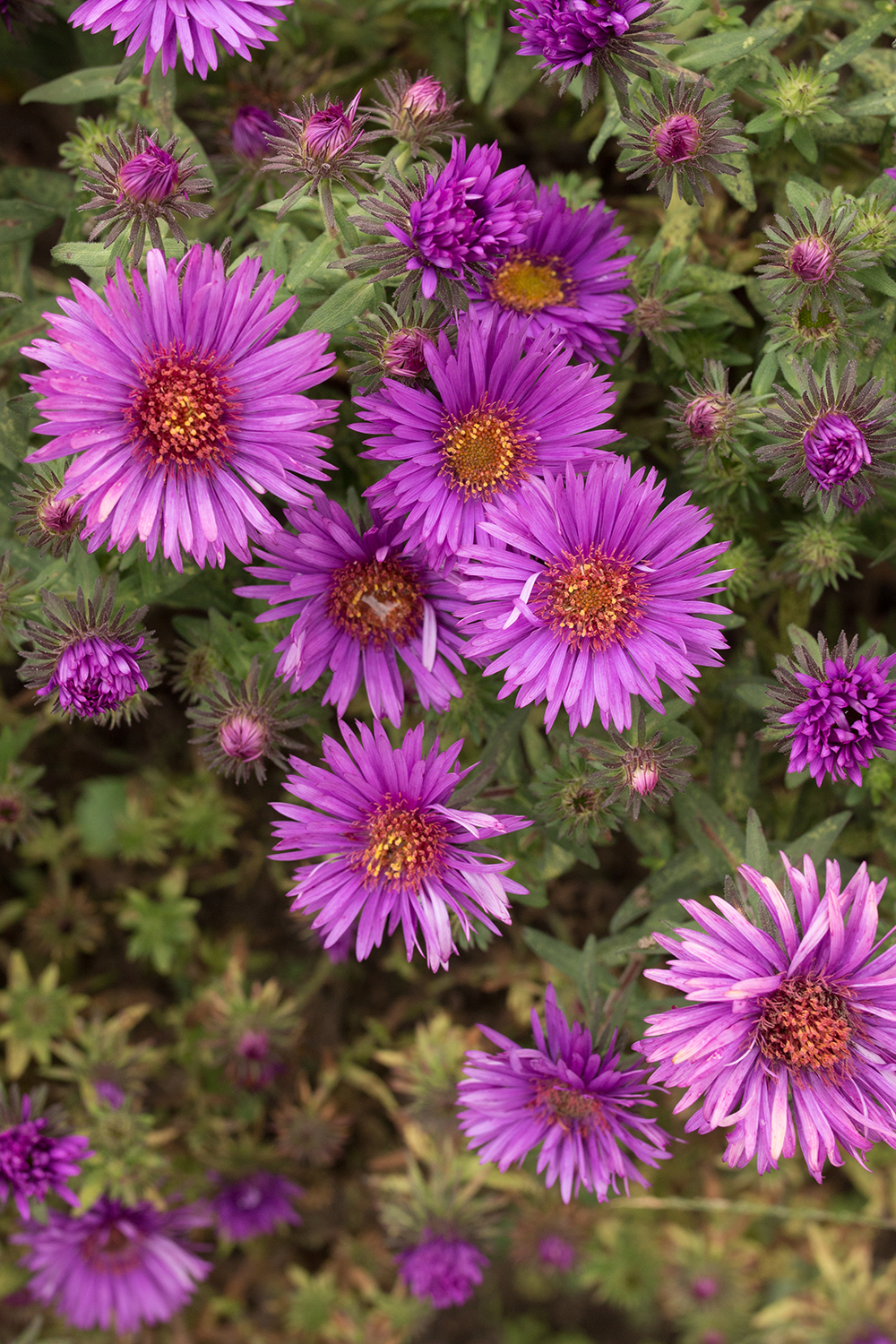Aster novae-angliae 'Purple Dome'
(Syn: Symphyotrichum)
Aster-New England
Aster novae-angliae 'Purple Dome'
(Syn: Symphyotrichum)
Aster-New England
Our top-selling aster. Prized for its compact habit that looks great in containers and deep purple flowers in fall. An early summer pinching will promote an even more compact habit. A great late season food source for pollinators, but typically not favored by deer. Introduced by: Mt. Cuba Center
Plant Details
- Zone: 3 - 8
- Height: 18-24"
- Spread: 24-36"
- Exposure: Full Sun
- Soil Moisture: High Water Needs, Moderate Water Needs
- Drought tolerant: No
- Bloom time: Early Fall, Late Summer
- Foliage Color: Green Shades
- Flower Color: Purple Shades
- Fragrant: No
- Good Cut Flower: Yes
- Native: Nativar
- Deer resistant: Yes
- Rabbit resistant: No
- Bee-friendly: Yes
- Attracts butterflies: Yes
- Attracts hummingbirds: No
- Groundcover: No
- Roy Diblik Favorite: No
Plant Details
- Zone: 3 - 8
- Height: 18-24"
- Spread: 24-36"
- Exposure: Full Sun
- Soil Moisture: High Water Needs, Moderate Water Needs
- Drought tolerant: No
- Bloom time: Early Fall, Late Summer
- Foliage Color: Green Shades
- Flower Color: Purple Shades
- Fragrant: No
- Good Cut Flower: Yes
- Native: Nativar
- Bee-friendly: Yes
- Deer resistant: Yes
- Rabbit resistant: No
- Attracts butterflies: Yes
- Attracts hummingbirds: No
- Groundcover: No
- Roy Diblik Favorite: No
Grower Information
Plant your Aster crop in spring for late summer and fall sales opportunities along with Rudbeckia, Eupatorium, Vernonia and fall grasses. Asters are heavy feeders, but it is best to discontinue feeding once they begin to bloom. Pinching is beneficial to promote lateral branching.
- PowerPlug Size(s): 32s
- Optimal Planting Time: Spring
- Retail Sales Window: Fall, Summer
- Moisture in Production: Average
- Requires Shade in Production: No
- Vernalization Required for Bloom: No
- Vernalization Beneficial: Yes



